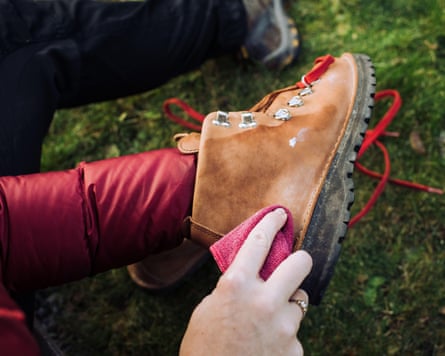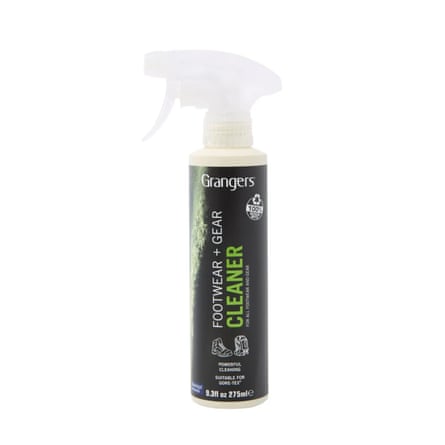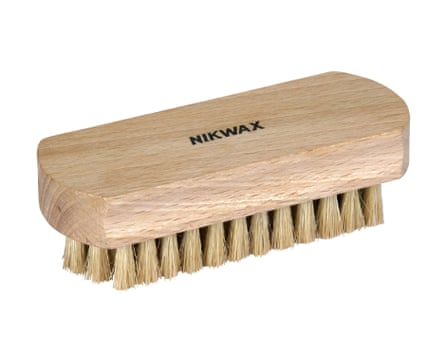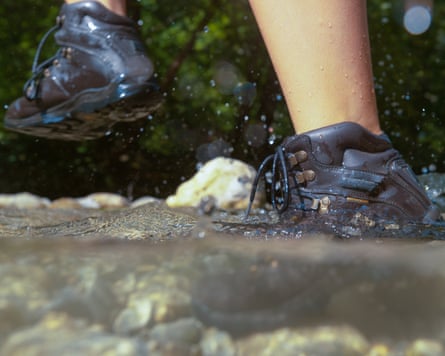Whether they’re being scuffed against rocks, trudged through peat bogs or keeping your feet dry in a torrential downpour, hiking boots have a tough gig. To cope with this, the best walking boots are built for durability, but that’s not carte blanche to throw them in a cupboard, still soggy, and expect them to be raring to go next time they’re needed.
If you want your boots to last, you’ll have to treat them with a bit of TLC. We spoke to walking-boot experts James Turnbull of outdoor clothing specialists Outside and Jeremy Stevens of Ellis Brigham to get their top tips for maximising boot longevity, from proper cleaning to resoling when necessary.
How to make your walking boots last longer
Get the fit right
The first step in making sure you get maximum wear out of your boots is taken before you set foot outside, says Turnbull. “This may sound obvious, but if the boots aren’t suitable for you, you’ll end up replacing them sooner. This is why a good fit is crucial when it comes to longevity.”
He says wearing a boot that’s too small can cause toenails to wear holes in the waterproof membrane. Conversely, a boot that’s too long will be prone to excessive creasing around the toe, which can cause the material to crack prematurely. The best way to avoid this is to visit a bricks-and-mortar shop. That way you can try on different boots and speak to an experienced boot fitter who can assess your foot and point you in the right direction.
Clean them (even inside)

“Cleaning your boots might not feel like your first priority at the end of a long walk,” says Stevens. “But giving them a quick clean will pay dividends in the long run. Bear in mind that upland soils are often slightly acidic, so caked-on mud won’t be doing the leather and stitching any good.”
Both he and Turnbull recommend brushing off chunks of dried mud with a soft nylon brush, using lukewarm water if needed. You can also use a gentle cleaner to tackle any stubborn patches.
“For a more thorough clean, remove the laces so you can get right into the bellows area of the tongue,” says Stevens. “Then remove the insoles and use a damp cloth to clean the inside of the boot. If you don’t, small bits of dirt can clog the waterproof membrane from the inside. This will reduce breathability, and over time, those bits of dirt can rub away at the membrane, causing leaks.”

Grangers footwear and gear cleaner

Nikwax shoe brush
Reproof
One of the most common complaints about walking boots is that they’re letting in water. Occasionally, this might be down to a defect, but most of the time it’s simply due to insufficient aftercare. That’s why reproofing is essential.
“Reproofing has two benefits,” says Stevens. “First to maintain the level of water protection, and second to nourish the upper materials so they stay strong and supple. The type of proofer applied depends on the material. For traditional full-grain leather boots, consider a rub-in wax (applied after the boots have dried). For nubuck leather, suede or fabric uppers, a spray-on proofer will usually be a better choice. Apply it while the boots are still damp from cleaning, so that it can soak in and offer longer-lasting protection.”

Grangers waterproofing wax

Nikwax spray-on waterproofer
Never force dry

When your boots are sodden after a day in the rain, the allure of the radiator is strong. But according to Turnbull and Stevens, “force drying” can wreak havoc on leather boots. “It sucks moisture from the leather too quickly, leading to cracking and failure,” warns Turnbull.
So what can you do if you’re in a pinch and need your boots dry for the next day? Stevens has some suggestions: “Other than simply leaving your boots to dry at room temperature, the classic ‘stuff them with newspaper’ tactic is one option. But the more modern approach would be to use something like a Therm-ic Dryer V2. This handy device gets air flowing inside the boot to speed up the drying process dramatically.”

Therm-ic Dryer V2
Store them properly
There’s a good chance you won’t be using your boots every single day, and where you choose to store them in between wears can affect their lifespan, says Turnbull.
“Glue or bonding can fail on boots when they haven’t been used for a long time,” he says. “It’s normally the sole that goes first. This can be due to the environment they’re stored in. If it’s too damp or humid, you can get what’s known as ‘hydrolysis’.”
Hydrolysis is a process where a chemical compound is broken down due to reaction with water over time. It’s a sort of chemical decomposition, and it’s the reason why it’s always best to store boots somewhere cool and dry.
Resole your boots
Follow all the steps above, and the uppers of your boots will probably outlast the soles. The constant stress of rock against rubber will eventually wear the outsoles down. The good news is that an increasing number of boots are designed to allow resoling. “Just make sure you do this before wearing through to the midsole,” cautions Turnbull. “Once this is damaged, there’s little that can be done.”
According to Stevens, repairing busted boots can be much more economical than replacing them with a new pair. “Most repairs are relatively cheap,” he says. “Laces can be easily swapped. Areas that are coming unglued can often be reglued. If your boots allow resoling, you can send them off to a specialist and get them back with a new sole unit, ready to walk hundreds more miles. These sorts of repairs don’t just allow you to keep walking in your familiar comfy boots, they’re much better for the planet too.”

Boot resoling
For more hiking inspiration from the Filter:
The best walking boots for men
The best hiking boots for women
The best head torches: six tried-and-tested favourites
Paddy Maddison is a consumer journalist, outerwear enthusiast and exercise addict. If he’s not hiking in the hills, he’s grinding up them on his bike, hurtling down them on his snowboard, or lacing up his running shoes and hitting the pavements. As a result, he gets plenty of time to put all the latest and greatest gear through the wringer for the Filter

 1 month ago
50
1 month ago
50

















































